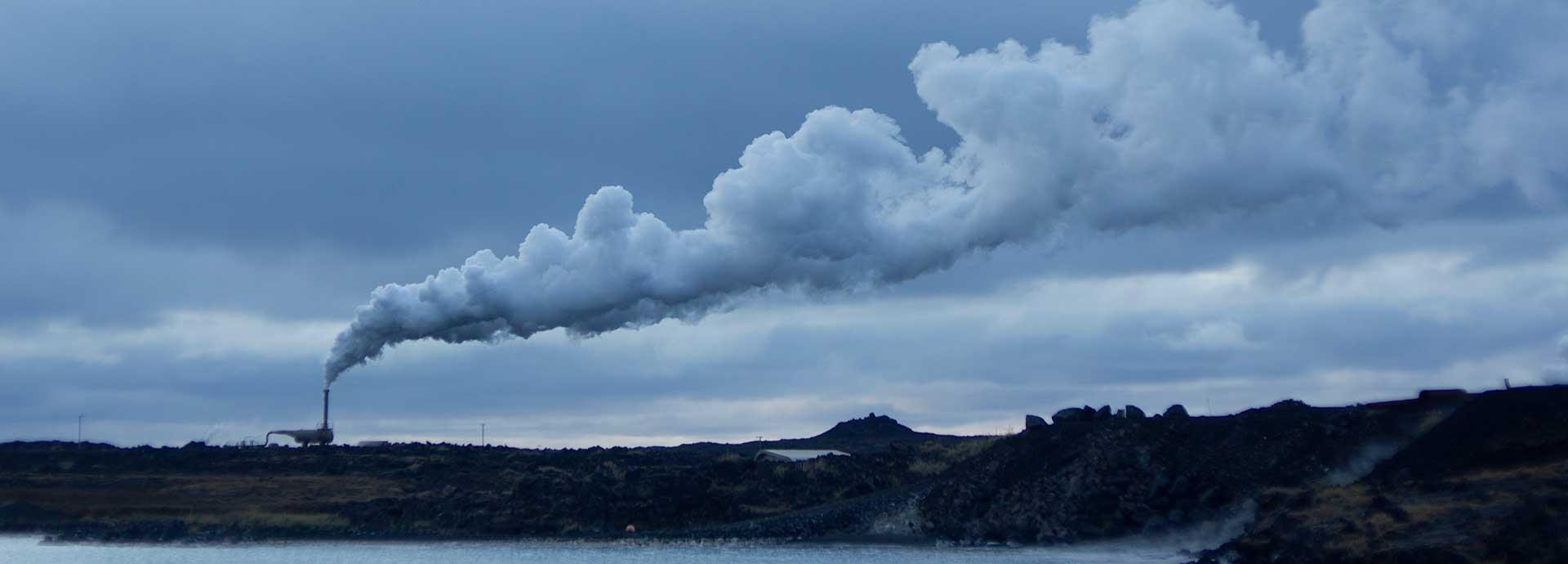

Iceland boasts a 100% reliance on renewable energy. But it hasn’t always been that way. We take a look at how the island nation turned its power situation around and find out how some off-the-grid innovations are paving their way to a greener future.
Modern-day Iceland represents an excellent example of how renewables such as geothermal energy can power a nation. But that hasn’t always been the case.
Until the early 1970s, the majority of the country’s energy consumption came from imported fossil fuels. While the Nordic nation has a long history of geothermal utilisation stretching back to when Iceland was first settled in 874, geothermal didn’t play a significant role in the country’s energy resources until more recently.
Ragnheiður Elín Árnadóttir, a senior fellow at the Atlantic Council Global Energy Center, once served as Iceland’s minister of industry and commerce and was responsible for energy issues. In a 2018 Atlantic Council.com post she writes, “a combination of necessity, a great deal of ingenuity, some stubbornness, a ‘problem solving’ mentality, and daring policy decisions have enabled Iceland’s small but impressive geothermal sector to become a global leader.”
Árnadóttir credits the country’s national effort in turning to geothermal in response to the 1973 oil crisis when global crude oil prices increased by 70%. At that time, close to half of all houses in Iceland were heated with imported fossil fuel at great expense.
“Concerted efforts and long-term political vision, along with an important support mechanism, transformed Iceland into a clean energy economy within just two decades. Subsequent generations of Icelanders have reaped the benefits of the foresight and courage of the politicians and policymakers from that time,” she notes.
Naturally gifted
Juha Pitsinki, GM, Business Intelligence, Wärtsilä Energy Business, is responsible for energy market intelligence vis-à-vis global markets at Wärtsilä, and he believes Iceland is naturally gifted when it comes to renewable energy.
“Iceland’s example is unique in many ways, as the majority of their primary energy and almost 100% of electricity is hydrothermal and geothermal today,” says Pitsinki. “The country has been able to use volcanic areas, which is not a natural resource that many countries have,” he says.
Geothermal plants use heat trapped beneath the Earth’s surface to generate electricity, or it can be used directly for heating. Conventional geothermal plants utilise steam from natural sources such as geysers.
“For renewables, solar and wind power are much more widely available globally, whereas only about two dozen other countries in the world have volcanic land used in electricity production today such as areas of Philippines, Kenya, and the US,” he says, adding that while hydro and geothermal energy are cost-effective for Iceland, geothermal is limited on a global scale.
Icelandic innovations
“We don’t have to stop at 100% renewables,” says Pitsinki. “Companies like Iceland’s Carbon Recycling International (CRI), which uses renewable energy to produce synthetic methanol from carbon dioxide and hydrogen are creating new innovations that have a global impact,” he says.
CRI won the top prize of a capital grant of EUR 50,000 earlier this year in Wärtsilä’s SparkUp Challenge, which is a vehicle for accelerating collaboration with start-ups and scale-ups in order to realise Wärtsilä’s vision of a 100% renewable energy future. CRI is a good example of Power-to-X, transforming or converting energy into something such as gas or fuel, that can be used later.
Pitsinki cites another example of Power-to-X, which is Soletair, a Finnish start-up that has developed a concept to improve air quality in buildings by capturing CO2 and converting it into synthetic renewable fuel.
Wärtsilä is providing 500,000 euros in seed money to Soletair, as their concept represents an important step towards a carbon neutral world and supports Wärtsilä’s strategy in leading the energy sector’s transformation towards a 100% renewable energy future.
Finnish leads
Geothermal energy in the form of heat is a common way to warm up houses in many countries, including Finland. More than half a billion euros were invested in 75,000 installed heat pumps in 2018 alone, according to SULPU, which represents the professional heat pump industry in Finland. The organisation reports that as many as 900,000 heat pumps have already been sold domestically, which corresponds to 15% of heating Finland's residential and service building stock.
Wärtsilä has developed an energy system model and analysis on the generation of district heating in the Finnish capital, which shows that wind power with adequate back-up and heat pumps are the best solution for giving up coal. The model demonstrates that giving up coal and switching to district heating generated with wind electricity and heat pumps is economically viable and reduces CO2 emissions by almost 90%.
Low-cost wind power is also changing the energy industry, says Pitsinki. This is offering energy companies new options for generating district heating with low costs and zero emissions.
Whether it is Iceland’s example or innovations elsewhere, Pitsinki says developing sustainable energy solutions works together for a common global goal: “It’s good if there’s lots of innovation and innovative start-ups globally – Power-to-X is the missing piece of the sustainable future puzzle.”


